
Decolonizing Augmented Reality
Summary
“Decolonizing Augmented Reality” was a NAVEL ASSEMBLIES working group co-led by Selwa Sweidan with contributions by workshop co-lead Lilyan Kris. This assembly was a community working group and making lab, offered through an experimental and intersectional feminist lens. Through readings and making, we explored the question “How might we decolonize augmented reality?”
Timeline
October 2019 - January 2020 (5 months minus holidays)
Group Participants
Elisabeth Asher, Siheun Kim, Huntress Janos-Szabo, Maxwell Josephson, Omar Pablo, Maxwell Chen and Evan Stalker.
Outputs
Decolonizing AR Reader
Prototyping Workshop
Decolonialathon (currently in planning mode)
October 2019 - January 2020 (5 months minus holidays)
Group Participants
Elisabeth Asher, Siheun Kim, Huntress Janos-Szabo, Maxwell Josephson, Omar Pablo, Maxwell Chen and Evan Stalker.
Outputs
Decolonizing AR Reader
Prototyping Workshop
Decolonialathon (currently in planning mode)
Through an experimental and intersectional feminist lens, we asked:
“How might we decolonize augmented reality?”
“How might we decolonize augmented reality?”
Introduction
This assembly came about as a natural expansion in my thesis work related to ‘co-visioning’ with AR in a direction stemming from readings of Arturo Escobar’s Designs for the Pluriverse. It was also an opportunity to have new collaborators shape my thinking and give myself space to practice facilitation and workshop design.
In the first three meetings, we reflected on a selection of readings to interrogate colonialism and decolonization strategies from the perspectives of design, anthropology, ontology and feminist geography. In the fourth meeting, we shifted towards a synthesis of our thoughts from the readings in the form of a working manifesto.
In the subsequent meetings, we moved into critical design making and spatial intervention workshops. “Making” included writing, counter mapping, low fidelity prototyping and learning how to use software. Depending on group-led input, final outputs may include a co-authored manifesto, the creation of a decolonizing AR toolkit/guide, individual or collaborative digital prototypes and/or performing spatial interventions.
Origins
- If augmented reality (AR) is positioned as the next big platform, how do we include many voices?
- What do we want our co-authored digital universe (pluriverse) to be?
Readings
Meeting 1: Overview
Meeting #2: Colonialism & Decolonization
You can see the full reading list and schedule breakdown in our Decolonizing AR Reader.
Reading 1: What Does It Mean To Decolonize Design?
Reading 2: What a Decolonisation of Design Involves: Two Programmes for Emancipation By Ahmed Ansari
Meeting #2: Colonialism & Decolonization
Reading 1: DELINKING The rhetoric of modernity, the logic of
coloniality and the grammar of de-coloniality, Lucy Mayblin, Walder D. Mignolo
Reading 2:Thinking-Feeling With The Earth, Arturo Escobar
Further Reading:
Tensing the Present: An Annotated Anthology of Design
Techniques to Inquire into Public Issues
“Decolonization is not a Metaphor,” Eve Tuck, K. Wayne Yang.
Before European Hegemony:The World System A.D. 1250-1350, Parts 1250-1350 by Janet L Abu-Lughod...
You can see the full reading list and schedule breakdown in our Decolonizing AR Reader.
Synthesis
I led a group mapping of our notes from discussion and readings to build connections, note gaps in our research, and note new questions. The outcome of this exercise was a general interest to take each post-it note and re-organize our research on another tool like Notion.
I gave a shot at digital post-it note synthesis using Whimsical and note taking on Notion but the group drifted in participation once we moved the activity online.
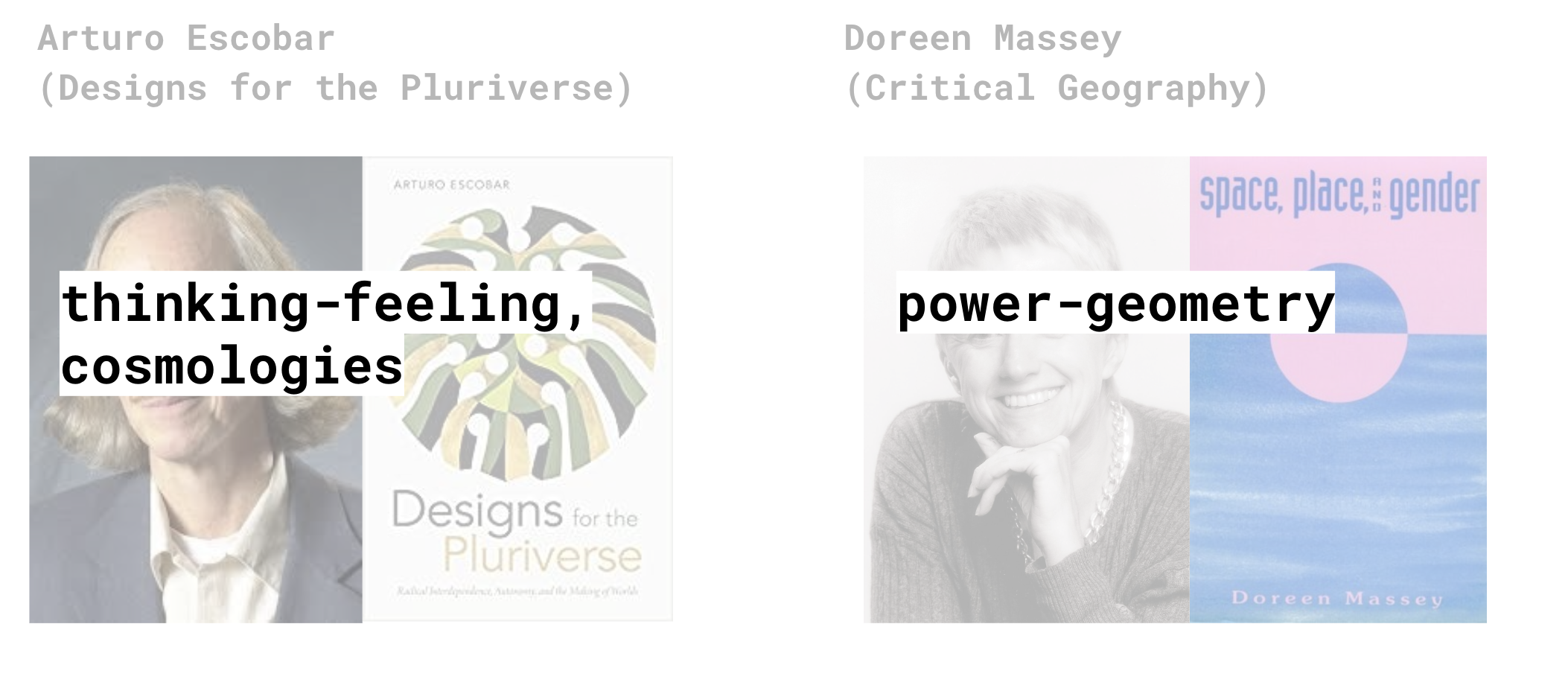
With December approaching and waning momentum, we took the most powerful concepts & metaphors from Escobar and Massey to move forward. While a co-written manifesto was the plan, we reverted back to these questions:
What is
.. decolonization?
.. a history of colonialism?
.. a design pluriverse?
.. a critical technological practice?
.. decolonization?
.. a history of colonialism?
.. a design pluriverse?
.. a critical technological practice?
What are
.. tools to decolonize augmented reality?
.. our personal identities, histories and values
(as a tool to decolonize augmented reality)?
.. tools to decolonize augmented reality?
.. our personal identities, histories and values
(as a tool to decolonize augmented reality)?
Me holding up a series of sketches of my personal cosmology mapping
Critical Making
Personal Cosmology
This activity was a first attempt to begin to recognize how space, time, personal histories, and memories are organized and how we might be able to express them orally, through notes, or sketches. I naturally tried to draw my concept of time (linear), general relations/associations to groups of people, nature, and geography through the various places I’ve lived in throughout my life. These were expressed through a series of diagrams.
![]()
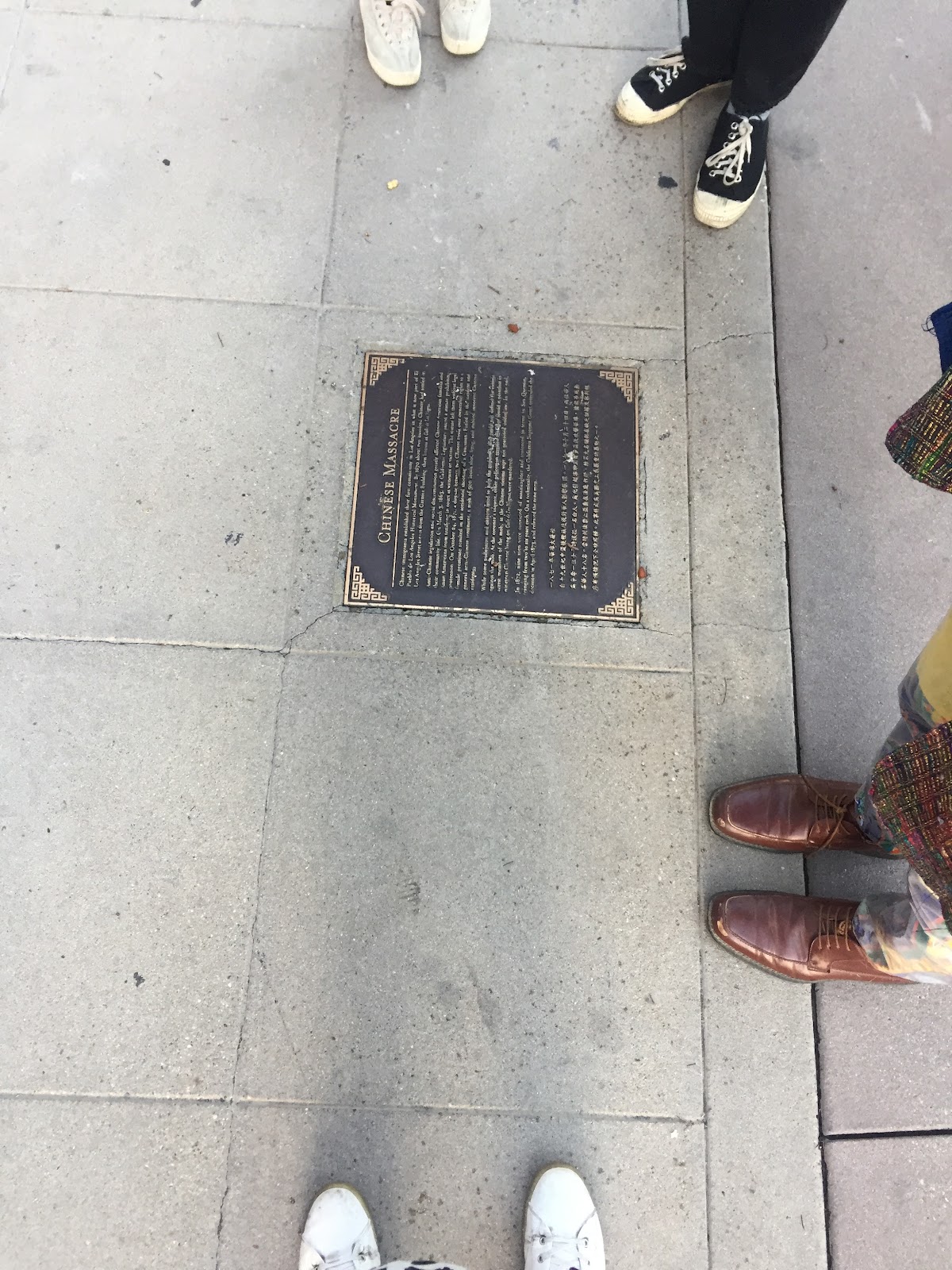
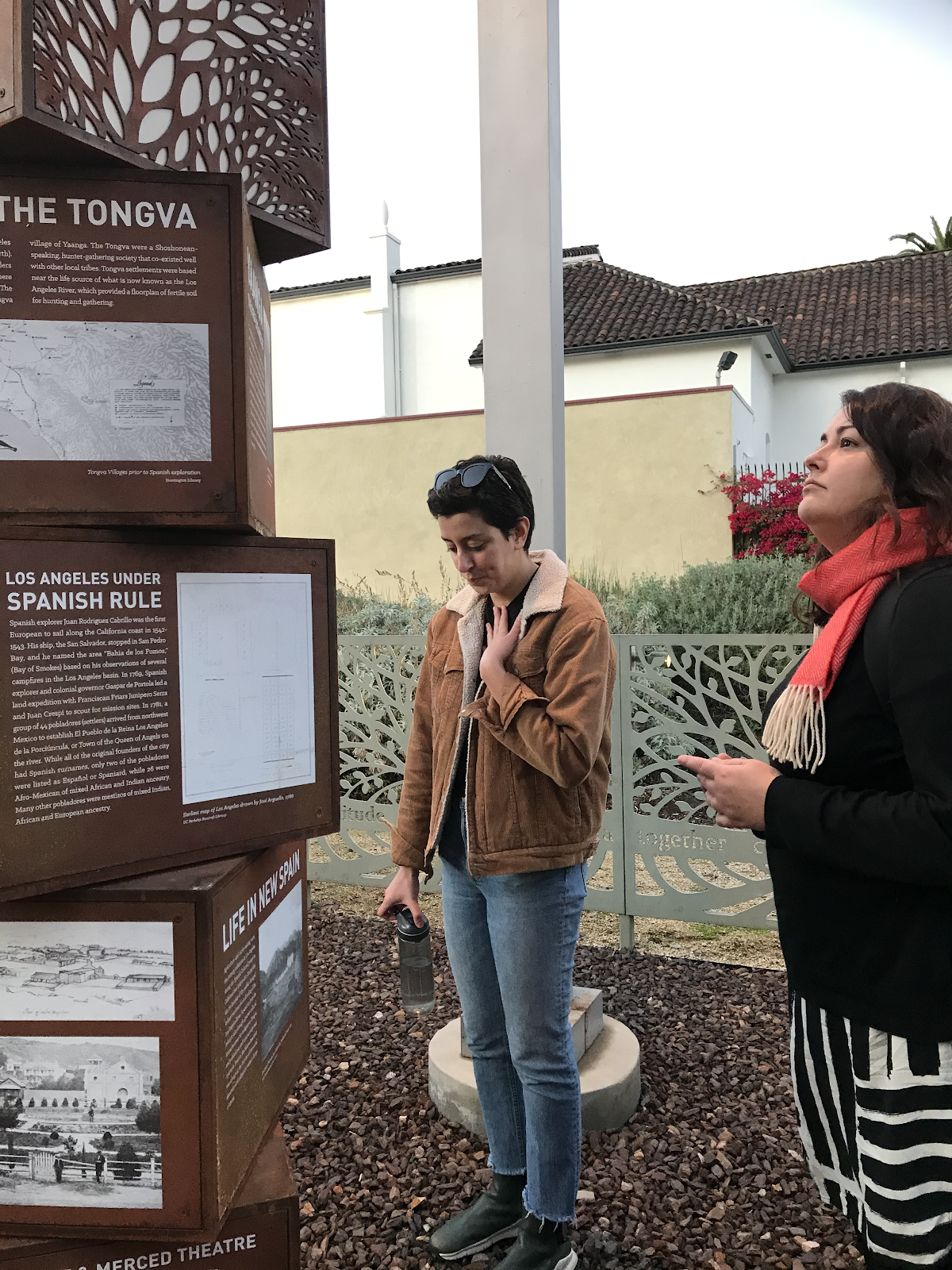
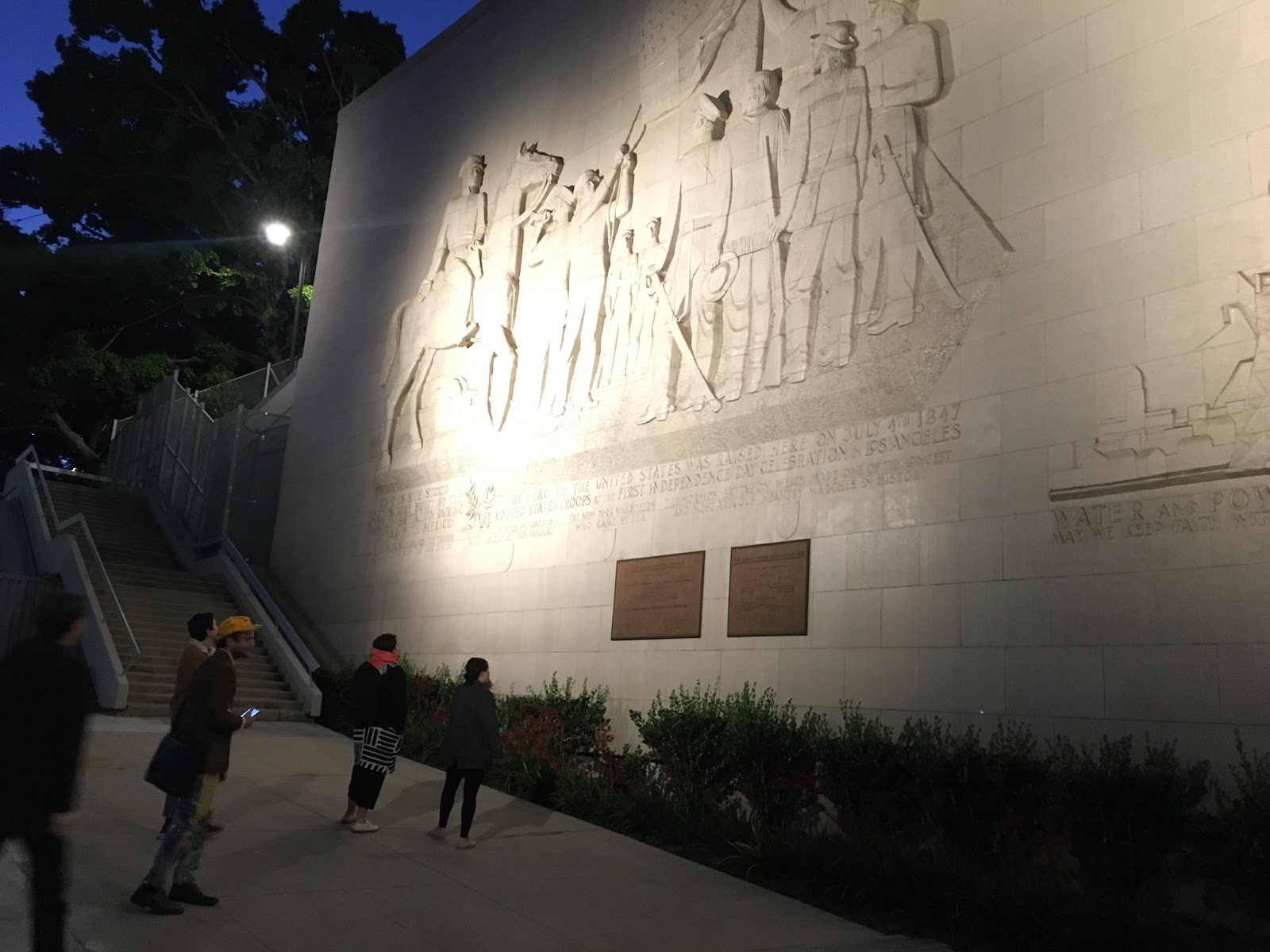

Critical Walking Tour: “Lynching in the West 1850-1935”, a publicly available tour by Ken Gonzales-Day
- Prototyping with a spatial technology necessitates engaging with space as a medium.
- How to support ourselves in critically moving through the history and psychgeography of moments of colonization?
- How do we critically move through space?
- How do we ground our questions in location?
- Reconstructing the stories and exploring these histories together led us to..
Workshop: Prototyping AR Cosmologies
In this closing workshop, we took key takeaways from the readings (Escobar, Massey, Mignalo, Kelly) and engaged in a thinking-feeling-making exercise that tackles our basic inquiry: how we might Decolonize AR. Using our bodies, personal objects, and space at NAVEL, we will individually deconstruct, understand and prototype our own cosmology and its relationship to others’ in the pluriverse. Through sensory awareness, performance, and the capturing of our own configuration of reality, we’ll take notice of little moments of interaction, feelings or relationships — seeing how they do or don’t translate digitally. Finally, we shared and discussed what is being left out and what we wish we could include when we digitize our cosmologies into this coming mirrorworld.
Agenda
Part 1: Deconstruct and Prototype your Personal Cosmology
Tools: Paper and pen, your objects, and your partner as a fellow recorder and brainstormer
20 minutes individual brainstorm / 20 minutes partner collaboration
What is your personal cosmology, origin story, or theory of the universe? What are the relationships or flows between your ancestors, land, animals, plants, other planets, personal objects, atoms, digital space, etc?
20 minutes individual brainstorm / 20 minutes partner collaboration
What is your personal cosmology, origin story, or theory of the universe? What are the relationships or flows between your ancestors, land, animals, plants, other planets, personal objects, atoms, digital space, etc?
- Synthesize a moment in your cosmology.
- How might you represent this moment using your personal object?
- What are the rhythms, rituals, relationships and structures that exist in your day-to-day reality?
- Start by recording it using the body and thinking out loud/feeling it
- Record 10 second clips from first person or ask your partner to record you
- Switch objects with your partner and record to see how one might use or perform a cosmology differently.
BREAK--->
15 minutes - Send Jessy your videos! Airdrop or email
Part 2: Walk-through of Cosmologies & Group Discussion
Tools: Torch AR / iPad to show everyone’s recordings in NAVEL space
15 minutes individual report out / 15 minute group discussion
Walk through/share individually:
- How did you digitize your cosmology? What was the process?
- What did you bring in and leave out? What did you represent most?
- What are the implications of bringing your cosmology into AR?
Group discussion:
- What are the emerging power geometries coming from these performances? How can we break them down or reorganize them?
- What questions are we battling with that are personal to us that we are not finding in the current landscape of AR? What is inexpressible in this context?
References
Cosmology: a conceptual framework that expresses a theory of the universe.
Buddhist Cosmology Mayan Cosmology
Hindu Cosmology (Mahavishnu) Brane Cosmology
Copernican Cosmology Egyptian Cosmology
Greek Cosmology “The Stack” by Benjamin Bratton
Power geometry of time-space-compression
“For different social groups, and different individuals, are placed in very distinct ways in relation to these flows and interconnections. This point concerns not merely the issue of who moves and who doesn't, although that is an important element of it; it is also about power in relation to the flows and the movement. Different social groups have distinct relationships to this anyway differentiated mobility: some people are more in charge of it than others; some initiate flows and movement, others don't; some are more on the receiving-end of it than others; some are effectively imprisoned by it.“
–Doreen Massey, A Global Sense of Place, 1991.
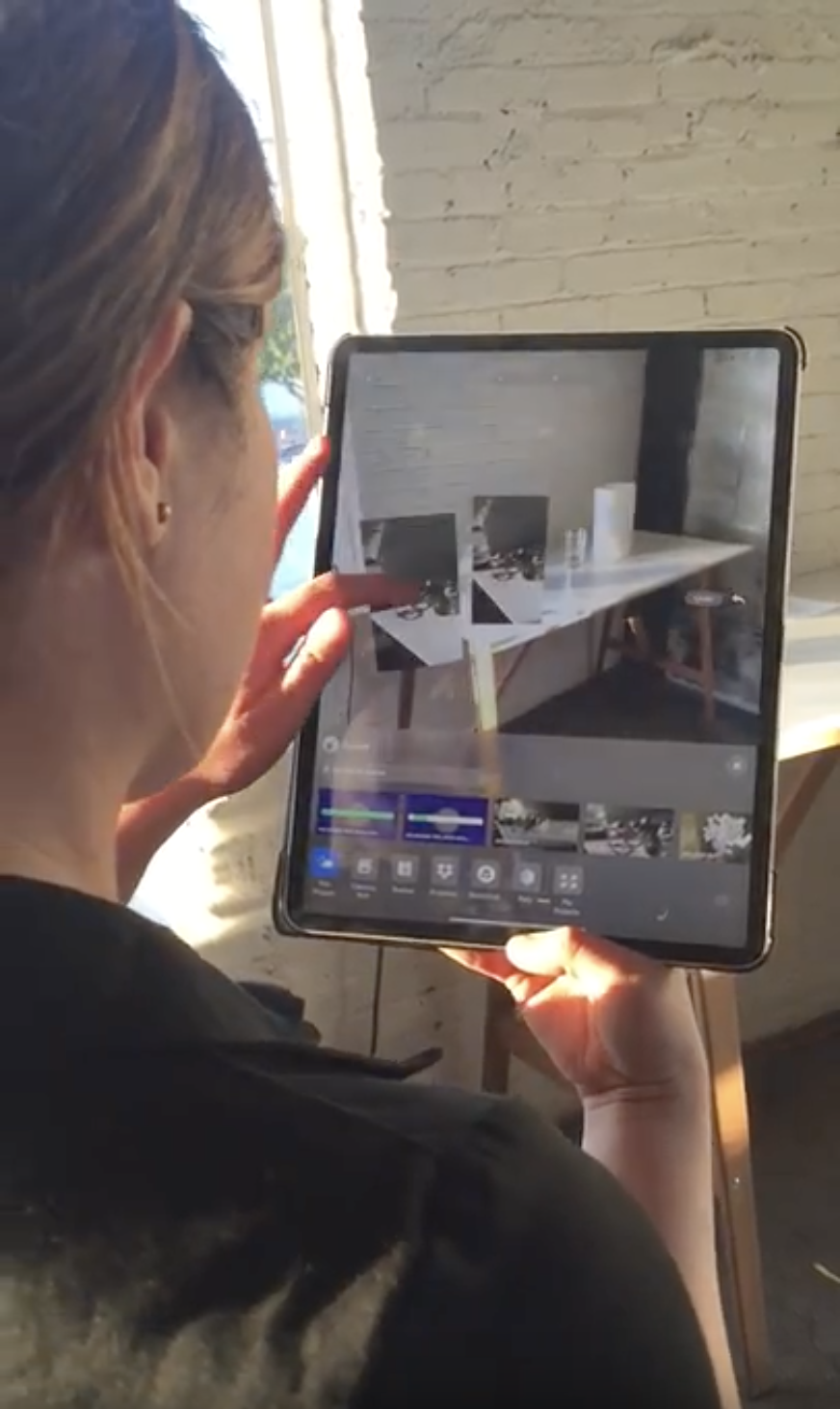

Using TorchAR

Selwa & Siheun stage a painful memory
“For different social groups, and different individuals, are placed in very distinct ways in relation to these flows and interconnections. This point concerns not merely the issue of who moves and who doesn't, although that is an important element of it; it is also about power in relation to the flows and the movement. Different social groups have distinct relationships to this anyway differentiated mobility: some people are more in charge of it than others; some initiate flows and movement, others don't; some are more on the receiving-end of it than others; some are effectively imprisoned by it.“
–Doreen Massey, A Global Sense of Place, 1991.
Some Work
Using TorchAR
Selwa & Siheun stage a painful memory

Maxwell talks about detachment of money
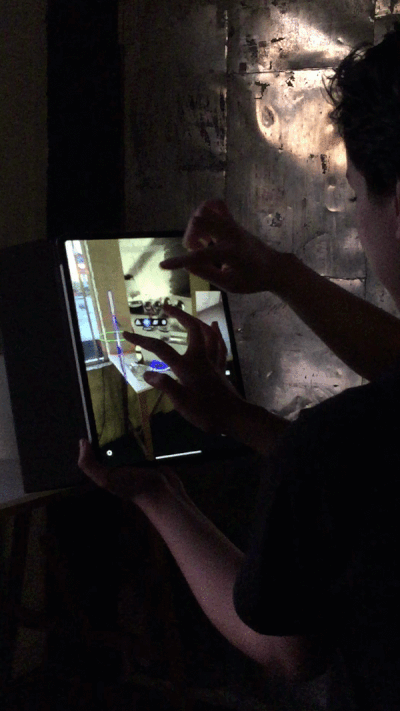
Lilyan & Huntress play with reflections
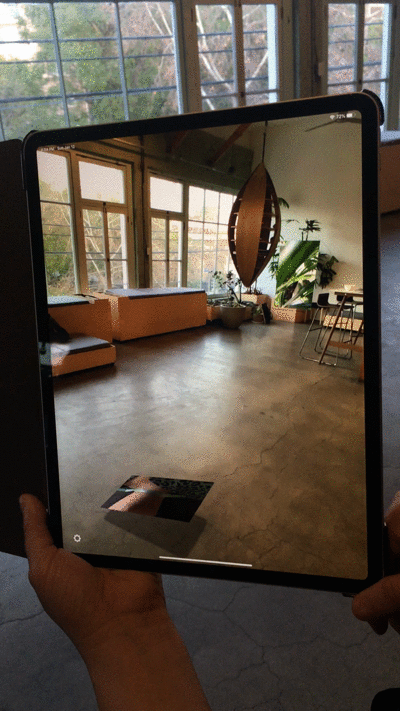
Selwa’s painful linear narrative & Siheun’s visceral plantscape
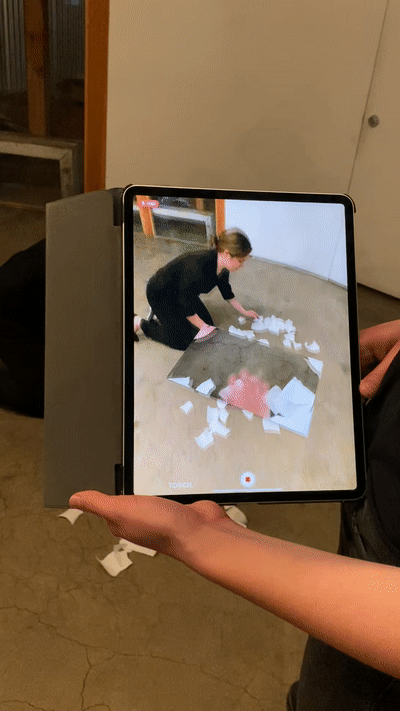
I’m hiding paper under an AR video of me moving paper
Reflecting
- Setting group dynamics important part of process towards co-creating a manifesto - interesting when became a collaboration
- Assumption validated: Many trade-offs when translating analog cosmology to AR. (i.e. smartphone camera can’t handle lots of reflection/light, emotions, prescriptive narrative viewed from a particular POV)
- Workshop design: how can we not be prescriptive while creating evocative intervention w/ materials
- AR tools’ power-geometry;
- Decolonial vs. personal lens
Decolonialathon - Why?
To...
- Broaden contributing voices to topic of decolonization in emerging technology
- Share tools and knowledge
- Continue material play
- Co-develop a manifesto
- Model an inclusive, cooperative techno practice
- Work outdoors to “think-feel with the earth” (Escobar)
- Expand on power geometries (Massey)
- Further a spiritual technopractice i.e. “cosmologies” (Escobar)
Final group presentation at NAVEL: Feb 3, 2020
Acknowledgments
This reading and critical making laboratory would not be possible without the support of our community.
Many thanks to: the NAVEL community for making this Assembly possible and providing microgrants.
Zena Bibler for introducing us to the work of Doreen Massey. Camera Obscura Art Laboratory for supporting earlier critical augmented reality labs in January and May 2019. Elizabeth Chin for introducing Arturo Escobar’s work, the world of anthropology and a decolonial lens to design. Ramon Tejada for sharing the“Decolonizing Design Reader”. Ken Gonzalez-Day for sharing a publicly available walking tour based on his research and book “Lynching in the West 1850-1935.”